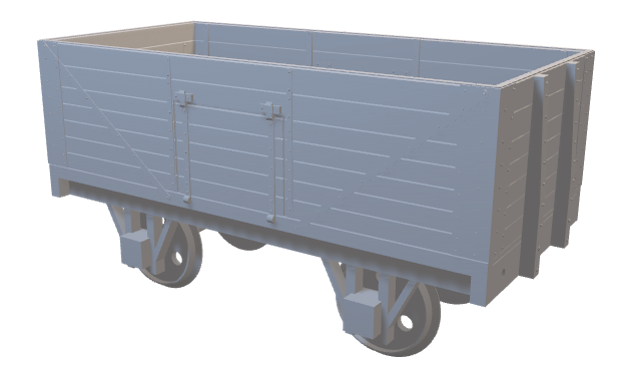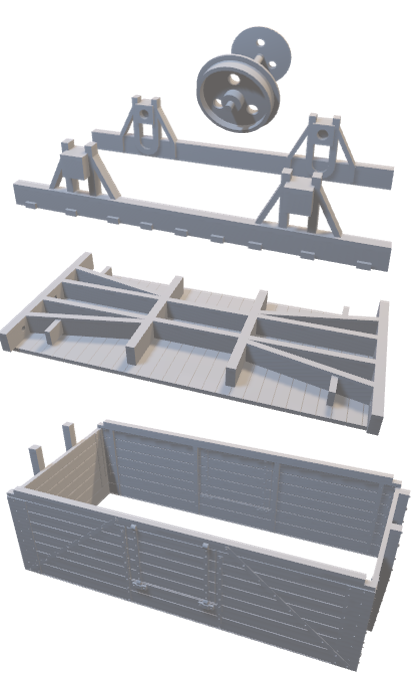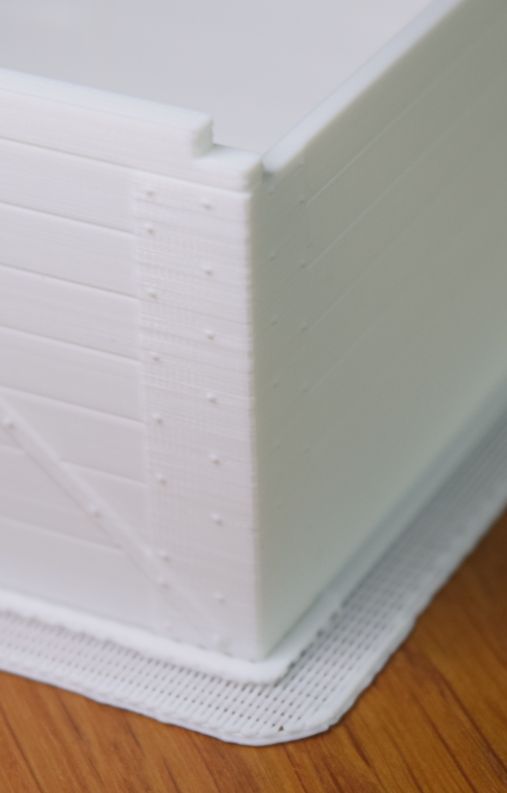

By the time of the grouping in 1923, the familar standard wagon design had been fully developed. You can read more about the background, and look at a set of drawings here.
The material on this page forms a parameterised 3D model of the RCH wagon with measurements taken from those drawings. All modelling is specified at life size. Scaling and bloating parameters may be used to generate models at any desired scale.
The model comes as a small set of assemblies, designed to be individually printed. The goal is to minimise the use of supports, and to allow the wheelsets to be inserted without having to try and bend the axle guards out of the way. This approach also allows one to mix and match body types, subframes and wheelsets. I provide separate STL files for the body, the floor and chassis, the sole bars and the wheelsets; by working with the OpenSCAD source file you can extract different sub-assemblies.

My test prints have used a Cetus 3D MK2. I print the elements upside down, using a 0.2mm nozzle at the smallest layer height and slowest speed. Apart from the wheelsets, no support structures are needed and I recommend that you switch them off if you are using the Cetus proprietary slicer. I do use a raft.
Print times at these settings are long: 52 hours for the body, for instance, but the results are (to my eye) suprisingly good. Of course, you can get a much faster print if you use a bigger nozzle or thicker layer height.

The first body type (side doors with wooden stanchions) is completed. All internal platework is modelled, and bolt heads, nuts and countersunk screws are individually represented taking of the account size variations on the diagrams. Further body types (end doors, bottom doors, metal stanchions, coke rails and perhaps a van) will follow.
A timber underframe and floor are complete up to, but not including, the metalwork (gusset plates, bolts and so on). No buffers or draw gear have been modelled so far.
The sole bars and axle boxes are crude maquettes, and are not meant to accurately represent the real thing but they do allow a running model to be constructed. The axle boxes are designed for use with 5mm sintered bronze oil-filled bearings that provide free running with either printed, or turned-metal wheelsets.
You can email me (Adrian Johnstone) directly or try the Gauge One 3D Circle forum at https://groups.io/g/GaugeOne3DCircle.
Pages managed by Adrian Johnstone, last updated 9 January 2020